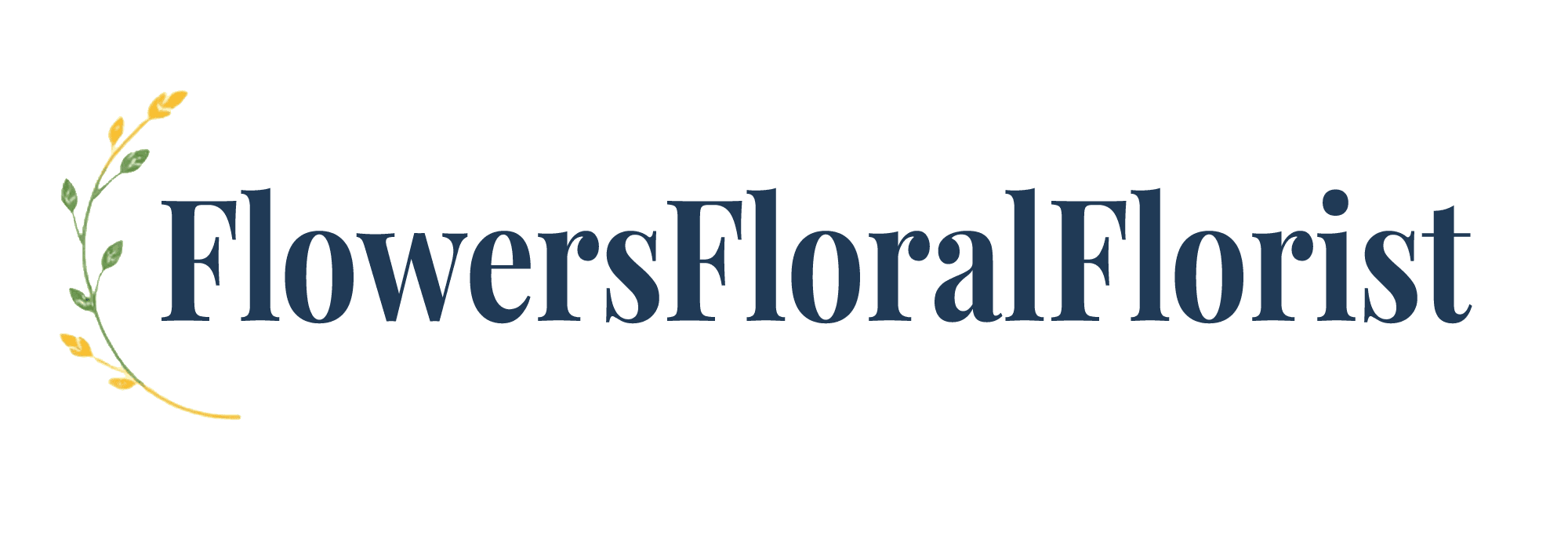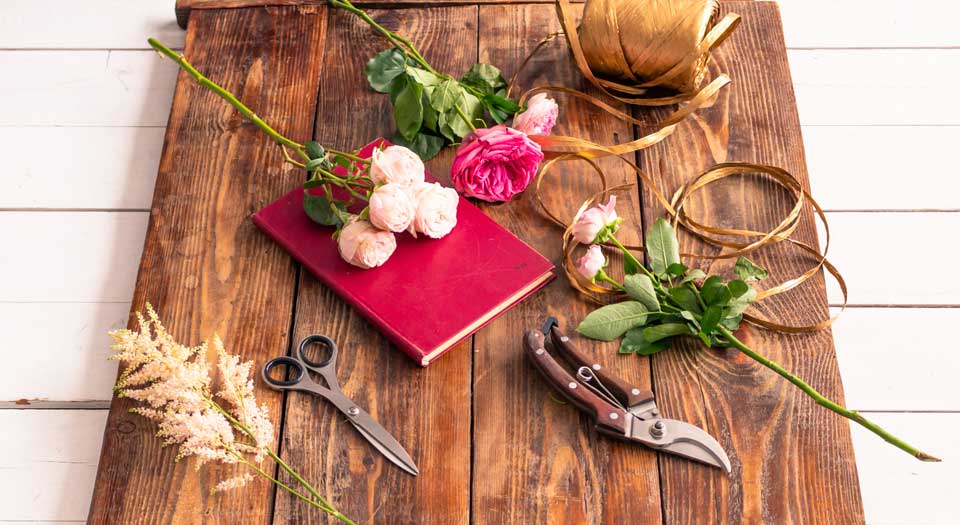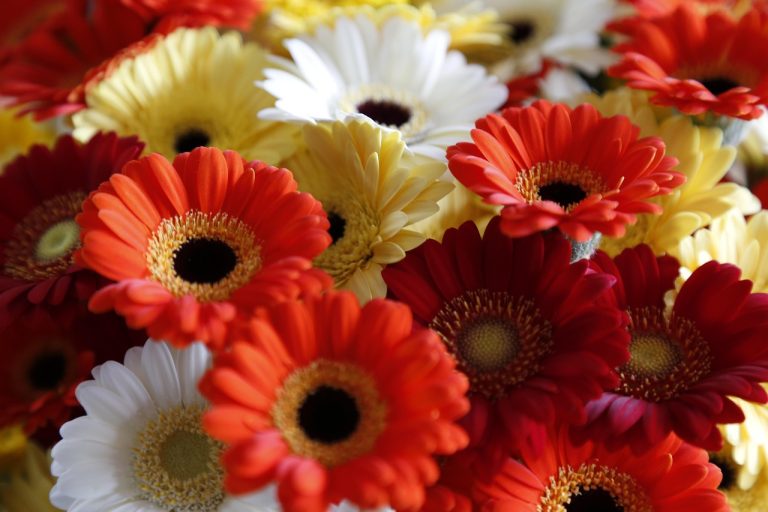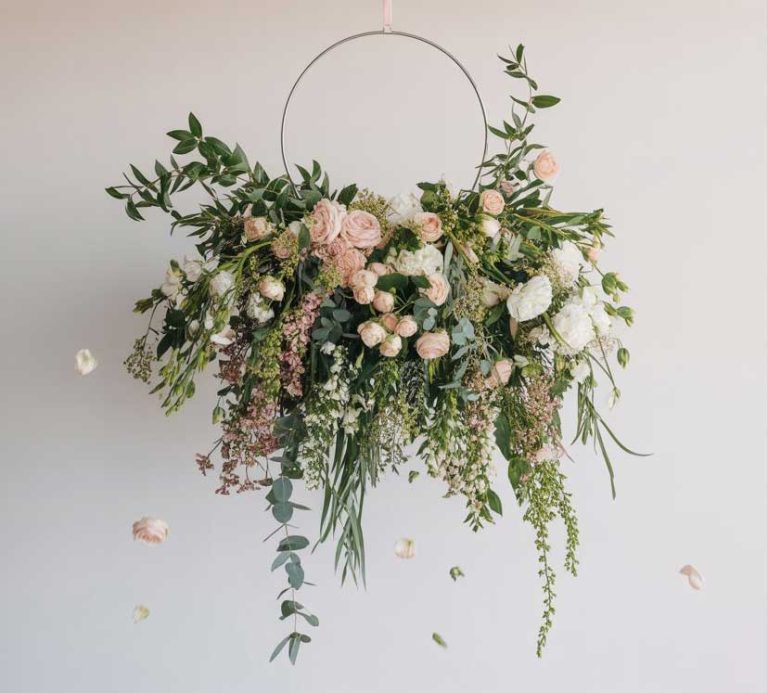Every type of floral arrangement begins with applying good floral design basics and principles, including solid mechanics, color grouping, and focal lines.
One of the problem areas with many DIY floral designers is their need for more knowledge and experience in these areas.
That’s why I love this instructional video from Beth O’Reilly. If you want to improve your design skills and increase your knowledge of floral design basics and principles, then this video is one you should watch and learn from.
Let’s check it out together.
I hope you apply some of the useful tips from that video. With this basic knowledge and hands-on experience, you’ll be ready to take on any floral design project confidently.
Here Are My Takeaways
Three points in this video are worth noting.
Create Line in Your Design
Line elements give a floral arrangement structure, shape, and visual flow. That’s where good floral designs start.
So for me, the biggest takeaway was how the line was how the curly willow and cascading deflexus foliage created a relaxed horizontal line. Looping the willow helped to soften the line visually.
The spiraling flat cane adds an interesting dynamic element to the design, and the flat cane strips used to “cage” the beehive ginger continue the movement.
Cost-Effective Use of Foliage
Adding a cascade effect with the deflexus greens while also using them to help cover the floral foam mechanics is a cost-effective way to use greenery in any floral design. You could use other inexpensive foliage, like plumosa and sprengeri, for a similar effect.
Grouping Flowers
Grouping or clustering flowers or foliage by color or type helps showcase each variety of flower used in an arrangement.
I often group the flowers I use in floral designs to make them stand out more, especially when placed in a large room, and people will view the arrangement from a distance.
You can group flowers in smaller arrangements, too. Here are two examples from our online catalog.
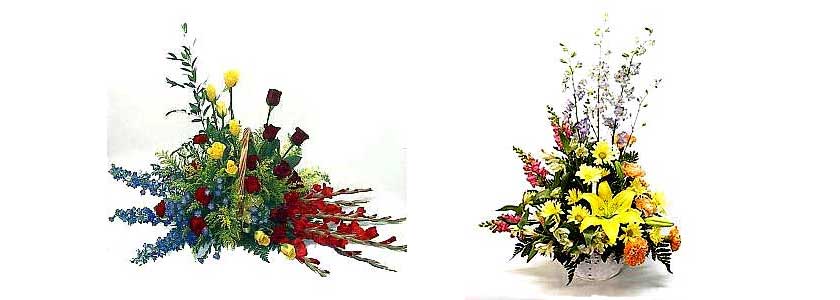
Creating lines, grouping flowers, and applying practical greening principles and techniques apply to all floral designs.
Why Mastering the Basics of Floral Design is Important
Every floral designer should know the basic principles of floral design.
Whether designing wedding flowers or arrangements and bouquets for yourself or others, once you master the fundamentals, you can confidently apply them to almost any type of floral arrangement you’d like to design.
As your confidence grows, it’s easier to add flair to your designs by applying more advanced design principles.
Experiment with color groupings, focal lines, and different design techniques until you find something that works for you is how you develop a unique design style.
Practice Is The Key
The best way to master anything is to practice. That’s true with floral design.
I’m surprised that more aspiring designers think they can magically absorb basic design principles by watching a video or two.
That’s not the way it works. It takes practice.
Practicing may seem like a lot of work, but spending a few hours per week honing your design skills will pay off quickly down the road.
I still experiment with new techniques today, even though I’ve got years of experience.
Imagine how good you’d look if you showed up at a job interview or bridal consultation with a portfolio full of beautiful bouquets you designed.
Or how great you’d feel knowing that you have the confidence to turn any event into a memorable occasion with your creativity and design style.
That’s what practice and a firm grasp of the basics will do for you.

Where To Look For The Flowers and Supplies You’ll Need
The flowers and greens used in this bouquet, including the curly willow, monstera leaves, deflexus, calla lilies, anthurium foliage, lilies, magenta roses, anthurium, beehive ginger, and orange roses, can be purchased online or from a local florist.
You can find them all at sites like BloomsbytheBox, GlobalRose, and FlowerExplosion. These are the ones that I’ve purchased flowers from in the past.
Of course, buying them from a local florist may cost you a little more, but you can usually purchase just what you need.
You can also find the flat reed used in the video on Amazon. Although commonly used in basket-making, it’s also an inexpensive accent for many floral designs.
The other floral supplies used, including floral foam, waterproof anchor tape, clear plastic tray, bind wire, and UGlu dashes, are available on our Amazon page.
Final Thoughts
The first step towards mastering floral design is to become familiar with the basic principles. Even though some techniques have evolved, the basic principles of good floral design remain the same.
You still want to focus on understanding the shapes, lines, and colors used in all flower arrangements.
Once you’ve mastered those fundamentals, you’ll be able to add creative touches to your designs and begin experimenting with creating your unique style.
Want More Tips Like This?
Enter your email address below. I’ll let you know when I add or update articles here.
You can also connect with me on social media if you’d like to continue the conversation. I’d enjoy hearing your thoughts.
And if you enjoyed this post, please share this post via one of the social share buttons below.
Til next time,

